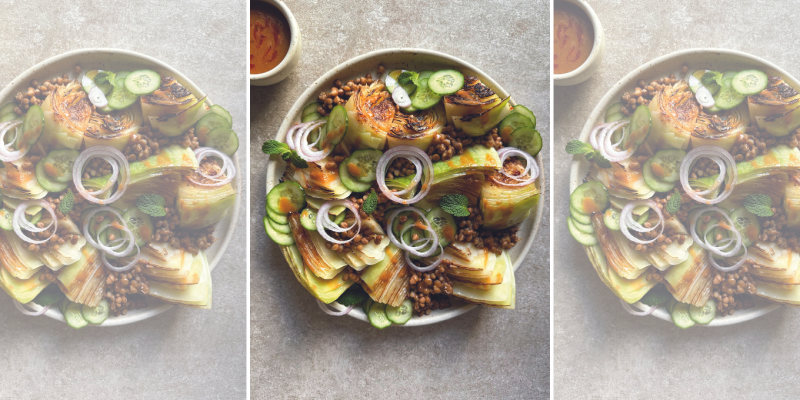Society
How to Make Your New Year's Goals Actually Stick
Make your resolutions a year-round commitment.
by : Val Desjardins- Feb 1st, 2024

Val Desjardins
As the month of January has finally come to an end, many of us find ourselves reflecting on the resolutions that we took over the holidays. The energy that marks the beginning of the calendar year can act as an incredible catalyst and, for many, these first few weeks remain filled with momentum and accomplishment. That begs the question – how do I capitalize on this moment and make these newly embraced commitments sustainable?
As a strength and conditioning coach, this is a question that I’ve been asked countless times, be it by new clients who are just embarking on their fitness journey or by seasoned veterans who are setting new intentions for the year. Regardless of your relationship to movement, the tips below are universally useful.
FIND THE DEEPER WHY
The goals that we set for ourselves should be rooted in a “deeper why”, something that holds a connection to our lifestyle and core values. Throughout my career as a fitness coach, I’ve met clients who are motivated by a desire to age well, be it for themselves or their families. Others train as a way to ensure that they can continue to partake in sports like pickleball or skiing, which have become integral to their social practices. Engaging in these activities pain-free and continuing to be part of our community can act as a powerful incentive to seek out strength training more regularly.
Even when our goals are rooted purely in physical and aesthetic changes, we still want to find a deeper sense of connection to both our health and wellbeing. Focus on goals that promote self-improvement and happiness. In doing so, the habits that you embrace will encourage your to consistently return to your chosen practices.
STACK HABITS
The process of adopting any kind of movement practice has to be gradual. Though it’s true that movement creates energy, we have to allow our body to build structural tolerance and increase its ability to absorb the impact of training.
For a person who is at the very beginning of their fitness journey, something that I’ve found to be incredibly useful is the framework of (2x) cardio sessions and (2x) strength sessions per week. Contrary to popular belief, at that frequency, the sessions can last an average of 30 minutes and still be incredibly productive.
Beyond easing into things gradually, stack habits in order to facilitate new practices. Couple a new habit with one that is already successfully integrated into your lifestyle. For example, if you want to commit to walking every evening, pair that with listening to an audiobook or podcast. Or, on the nutrition front, if your are trying to embrace plant-based eating and we know that your family already loves Taco Tuesday, opting for a plant-based version of that meal.
Pairing new habits with a practice that is either pleasant or habitual increases your chances of remaining consistent. Combined with an intention to only add one habit at a time to your routine, these are the strategies that are most likely to make your long-term commitments sustainable.
CHOOSE THE RIGHT TOOLS & RESOURCES
Having the right tools at our disposal can be a source of positivity that allows us to stay consistent. At the most basic level, that means choosing to pursue physical activities that we actually enjoy when creating fitness routines for ourselves. For example, if you like dancing, seek out a dance cardio class that will challenge your cardiovascular system and still allow you to take part in an activity that you enjoy. Alternatively, if you’re a person who enjoys cycling, a spin class might be closer to your preferred movement practice.
Finding the right coaches and instructors to keep you motivated. You should be empowered to know that at different times in our lives, we are going to need different types of support and that can mean seeking support from different types of people.
It might be worthwhile to invest in certain tools related to your practice. As someone who has been a runner their entire life, leaning into the use of my Apple Watch over the last running season has allowed me to access metrics and hone in on self-improvement in a way that I find particularly motivating. Similarly, for beginners, it can help to pinpoint any areas that can be radically improved.
PURSUE SOURCES OF MOTIVATION
As a coach, I’ve come to understand that there is tremendous value in seeking intentionally-curated environments that align with personal energy. The design of the space, the people that are in it, the music on the speakers – all of these elements contribute to creating a fitness experience that makes people feel comfortable and attracts like-minded humans.
The sense of belonging that we experience when find community spaces that make us feel welcome, safe and seen is a powerful motivator. It can help to solidify a love for new practices. This is similar to the feeling of having an accountability buddy who agrees to swap a “5 à 7” in favour of a spin class and smoothie date.
As a coach and as an athlete, music remains my favourite source of motivation. Over the years, it’s become integral to my own training and the training experiences that I’ve crafted for my clients.
In fact, my belief in the power of music is such a strong part of my identity that I was recently asked by Apple to join their “Music That Moves Me” campaign. The playlist that I created (which will be featured exclusively on Apple Music until the end of February) was intentionally designed to mimic the arc that our nervous system follows in the midst of a workout. Ultimately, I designed this knowing that a powerful song can push us through the peak of our workouts and help us to achieve the level of intensity that we are striving for.
Newsletter
Join our mailing list for the latest and biggest in fashion trends, beauty, culture and celebrity.
Read Next

Beauty
The Best Met Gala Beauty Looks Of All Time
From Taylor Swift's 'Bleachella' era to Rihanna's iconic 2011 braids, meet the best beauty moments in Met Gala history.
by : Katie Withington- Apr 26th, 2024

Culture
Benny Blanco Says He Fell in Love With Selena Gomez Without ‘Even Noticing’ It
Allow Benny Blanco to tell the straight-from-a-rom-com story of how he realized his feelings for his girlfriend and longtime friend.
by : Alyssa Bailey- Apr 26th, 2024

Beauty
ELLE Tried It: Five Serums to Up Your Skincare Game
Members of the ELLE team tested Avène Dermatological Laboratories’ five new concentrated serums. Here's what they thought.
by : ELLE Canada- Apr 25th, 2024




